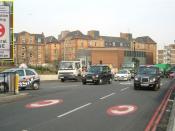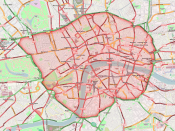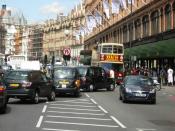The main aim of congestion charging is to reduce traffic in central London thus reducing congestion. Predictions suggest traffic in the charging zone will be reduced by around 15%, reducing queues by up to 25%. Currently over 130,000 vehicles travel into the planned congestion charging zone per day. This would be cut by 20,000 people transferring from their cars to public transport - 5,000 to the tube and rail and 15,000 to buses. All of these people will be accommodated with the planned introduction of 200 new buses and improvements to existing routes. The charge will enable bus routes to operate more reliably, improving the efficiency of the transport system and also reducing traffic congestion will improve the reliability of journey times and so improve business efficiency.
The money raised from congestion charging must, by law, be spent on improving London's transport system. Congestion charging will generate revenues estimated at ã130m annually.
This will enable substantial investment including: further bus network improvements, aimed at getting even more people out of their cars; safety and security schemes to improve personal safety and reduce transport-related crime and fear of crime.
If these predictions are correct we can expect to see a substantial reduction in traffic congestion in central London and an improved public transport system. There is little doubt in my mind that the congestion charge will generate a substantial amount of money, which can do nothing but help improve the public transport system. I feel many of the current motorists do not use public transport because they feel it is of a low standard, therefore I think it will be a few years before any of these motorists stop using their cars. However HGV's and non-time sensitive journeys into the centre of London will surely be re-scheduled to times when the...


